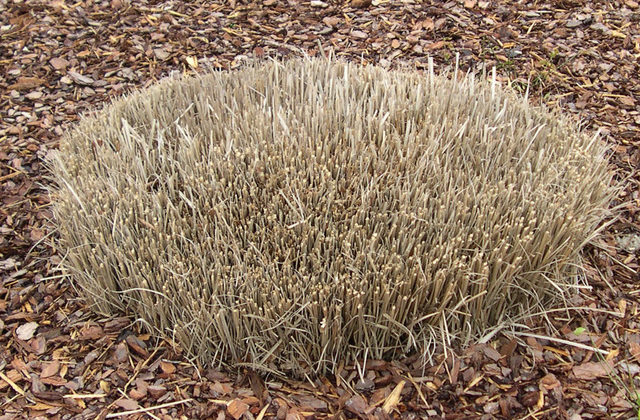

Ornamental grasses make excellent screen plants to hide unsightly propane tanks and air conditioners, or for privacy around patios and decks.
They develop faster than shrubs. Professional designers mix a variety of grasses with perennial flowers and woody plants, sometimes massing them for showy effects. Grasses range in size from tiny pillows less than a foot tall to huge clumps over ten feet tall. They come in a range of colors from dusty blue to pink and purple.
Maintaining grasses is easy. Most grasses grow in nice, neat clumps, and need only a once-a-year haircut. They live for years, are tolerant of drought and don’t attract pests or diseases. Fertilizing each year will help them look their best. A pound or two of Plant Tone scattered around the root zone is all they need.
Established grasses tend to die out in the middle of the clump, which then becomes a ring or doughnut shape. This is because they exhaust the soil in the middle. To revive them, simply cut out the middle of the clump and add some topsoil and plant food.
You should cut grasses down to the ground once a year, when they are dormant, between late fall and early spring. Some grasses make a mess in the winter, but most will stay nice and neat to provide winter interest. Birds like the seed heads, so leaving them until spring provides forage for our feathered friends.
A good way to compare grasses is by looking at the size they will be when they are fully grown. This way you’ll be sure to space them properly and allow enough space for them to develop to their fullest. Most grasses do best in full sun with plenty of moisture, but the most popular grasses are quite adaptable and will do well almost anywhere. Hardy grasses are perennials and will return each year larger. Here’s a rundown on some of our favorites:
Miscanthus, commonly called “maiden grass,” has a very graceful habit, softly drooping and waving gently with the slightest breeze. Some have “zebra stripes,” others have stripes along the leaves. Miscanthus are great for privacy or screen plantings and come in many sizes.
Pennisetum, or “fountain grass” is another popular grass family. Most have showy pink seed heads. Pennisetums work well in perennial borders or foundation plantings, mixed with flowering plants and shrubs. Our favorites are “Hameln.” “Little Bunny,” “Karley Rose” and “Moudry.”
Some grasses have an upright form that works well in tight spaces. The popular “Karl Foerster” feather reed grass has attractive, wheat-like seed stalks that stand straight up, great for mixing with foundation shrubs and hiding unsightly utility meters. Panicum “Shenandoah” gradually turns purple during the season, and grows in a tidy upright clump that looks great in foundation plantings.
Pay attention to the hardiness zone when buying ornamental grasses, or you could buy varieties that aren’t hardy perennials in this area. Southwest Ohio is in zone six, so you should look for zone six, five or four.
People often ask us for “pink pampas grass,” shown often in mail order catalogs but not hardy in Ohio winters. Red fountain grass is popular for planters. We think of both of these as annuals and pay less for them than perennial grasses.
Steve Boehme and his wife, Marjorie, own GoodSeed Farm Landscapes near Winchester, Ohio, a design-build landscape/hardscape installer specializing in outdoor living spaces. Visit goodseedfarm.com or call 937-587-7021.
ID, 'source', true); $sourcelink = get_post_meta($post->ID, 'sourcelink', true); $sourcestring = '' . __('SOURCE','gabfire') . ''; if ($sourcelink != '') { echo "
$sourcestring: $source
"; } elseif ($source != '') { echo "$sourcestring: $source
"; } // Display pagination $args = array( 'before' => '' . __('Pages:','gabfire'), 'after' => '
', 'link_before' => '', 'link_after' => '', 'next_or_number' => 'number', 'nextpagelink' => __('Next page', 'gabfire'), 'previouspagelink' => __('Previous page', 'gabfire'), 'pagelink' => '%', 'echo' => 1 ); wp_link_pages($args); // Display edit post link to site admin edit_post_link(__('Edit','gabfire'),'','
'); // Post Widget gab_dynamic_sidebar('PostWidget'); ?>